
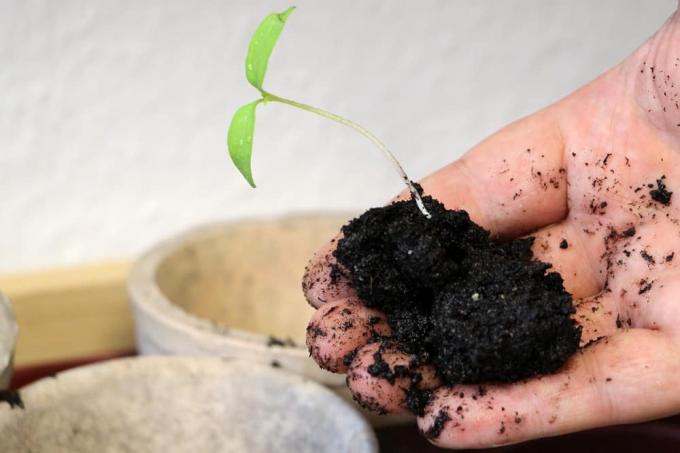
Table of contents
- basics
- Ideal time
- Location
Tomatoes enjoy unbroken popularity among hobby gardeners. No wonder: they are healthy, tasty and relatively easy to cultivate. You grow them comfortably in the apartment and then transplant them into the garden. However, the question is: when can the tomatoes go outside. The answer: When no more night frost is to be expected. And once they've settled in.
basics
Tomatoes love heat and sun. No wonder: They originally come from South America. No wonder that they are extremely sensitive to cold. Night frosts kill practically all tomato plants. They can therefore only be transplanted outdoors when there is a very high probability that no more frosts are to be expected. A little earlier hanging can be done in a greenhouse. It doesn't matter whether it's outdoors or in a greenhouse - first of all, the tomato plants have to be raised. You either grow them from seeds or you buy young plants in specialist shops or at the hardware store. The rearing itself always takes place inside. Since the young plants are very sensitive, they can only go outside or in the greenhouse when they have reached a certain size. They also need to be slowly acclimated to the new environment.
requirements
In order for a tomato plant to be planted directly in the garden, it must be robust enough to withstand the weather conditions there. Whether she is ready to move outdoors can be seen from a few specific characteristics. These characteristics are:
- a size or Height that ranges from 30 to 40 centimeters
- an incipient formation of the first flower umbels
- if possible, no or only a very small amount of smearing
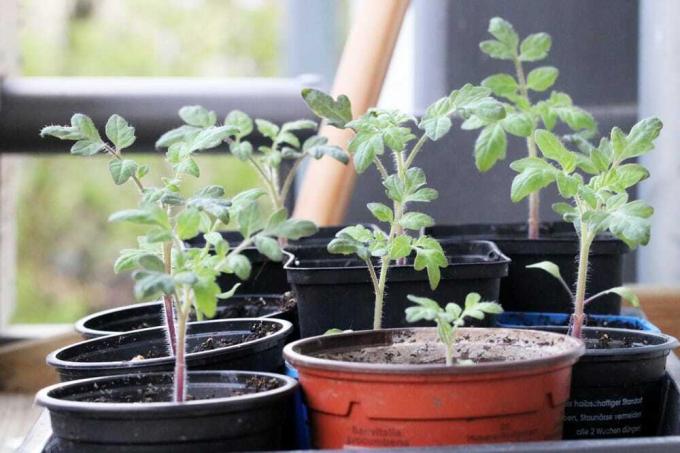
In addition, it is imperative that the young plant is carefully hardened or softened before planting out. has become accustomed to outdoor weather conditions. This can be done, for example, by placing them on a sheltered balcony by the hour or by placing them on the windowsill with the windows open. Alternatively, they can of course also be placed in their pot in the garden for a few hours from around the end of May. Basically, you should pay attention to a semi-shady place and avoid direct sunlight. This hardening phase lasts about half a month.
Tip:
The hardening of a tomato plant can be accelerated by putting a transparent tomato hood loosely over the entire plant. The foil must have air holes and must not touch the leaves.
Ideal time
As already mentioned, night frost means certain death of tomato plants. It follows that they can only be brought outdoors when there is no longer any threat of night frost. However, you have to distinguish between tomato plants that are placed directly in a bed and those that are to be cultivated in a greenhouse or on the balcony.
outdoor
The tomato plants are only allowed into the bed after the ice saints are over and no more night frosts are to be expected. As a rule of thumb, from the 20th May of a year is the case. In addition, the probability of precipitation should be significantly lower from this point in time. Although tomatoes want to be watered regularly and need a relatively large amount of water, they do not cope well with rain. In principle, the floor should also have a temperature of at least 13 degrees Celsius.
Glasshouse
The planting of tomato plants in a greenhouse, on the other hand, can be done much earlier, namely in a period from mid to late April. The risk of night frosts in a greenhouse is negligible. It also offers guaranteed protection against rain and wind. On particularly cold days or on cold nights, the temperature in the greenhouse can be increased by placing burning candles in the greenhouse. The flames then heat the air. Incidentally, the risk of causing a fire is almost zero.
balcony
Tomato plants that are cultivated on the balcony always have their roots in a plant pot. They can be brought outside from around the beginning of May. However, the outside temperature should be at least ten degrees Celsius. If it falls below this mark, the plants should be brought back inside or protected with foil. It is imperative to choose a sheltered spot on the balcony that protects the plants from wind, rain and excessive solar radiation.
Location
Although the tomato comes from significantly warmer regions than ours, it copes well with the local weather conditions. It is simply important to protect the plants from cold, strong wind and rain. In addition to the right time, the right location also plays a decisive role. It is always ideal to be near a wall that offers some protection from the wind, which could snap the plants, especially at an early stage. If the wall is part of a building with an overhanging roof, some rain protection is also guaranteed. And with a bit of luck, it even provides enough shade for most of the day.
 garden editorial
garden editorial I write about everything that interests me in my garden.
Learn more about tomatoes
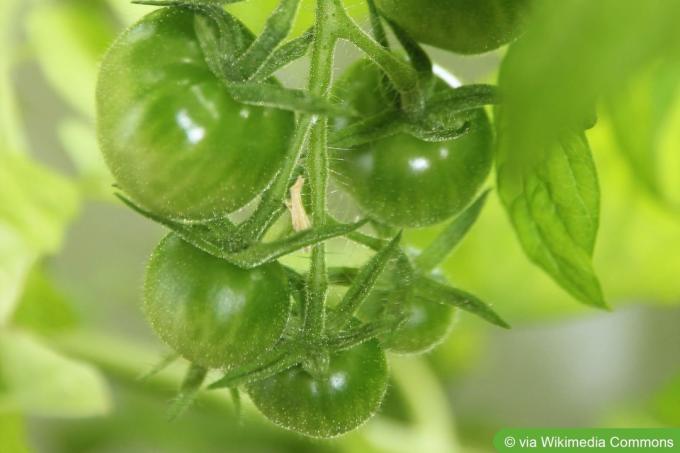
Mexican Honey Tomato: Taste & Cultivation
With the "Mexican honey tomato", hobby gardeners can bring a particularly sweet tomato variety into their garden. Due to its low acidity, it is one of the most popular sweet tomatoes and at the same time very easy to care for.
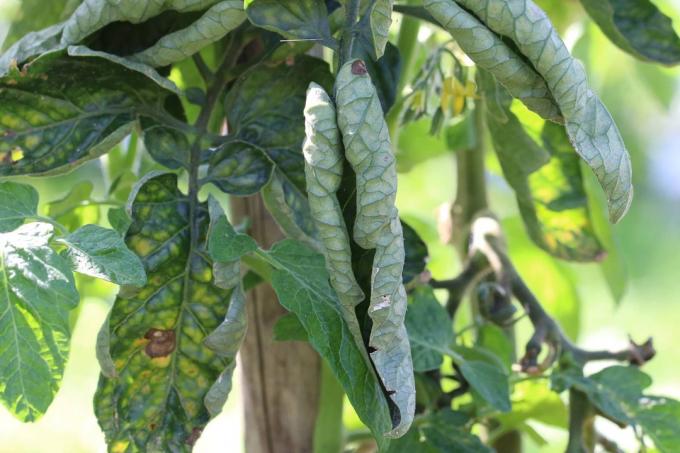
Tomato leaves curl: what to do?
There are many causes of curled leaves on tomato plants. Some are harmless, others can ruin crops. So waiting is not an option. Like a detective, you must search for clues. And then, if feasible, tailor-made countermeasures. Here's what to do when tomato leaves curl.
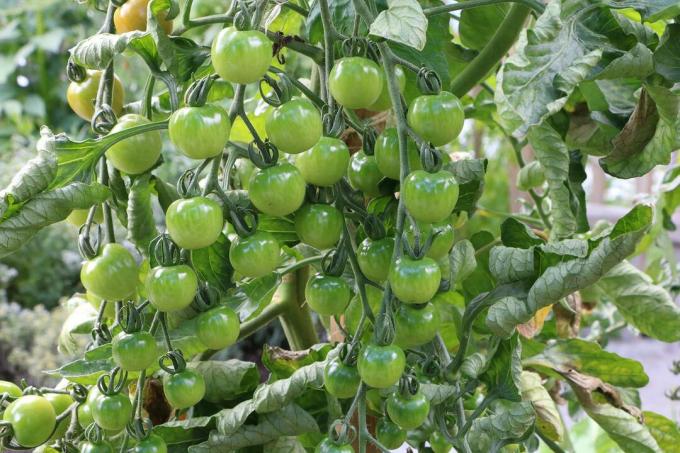
Fertilize tomatoes: how often, when and with what?
Tomatoes need a consistently high amount of nutrients for the development of flowers and fruits. In addition to choosing the right fertilizer, the amount and frequency also play an important role. All essential information for an optimal dosage can be found here.
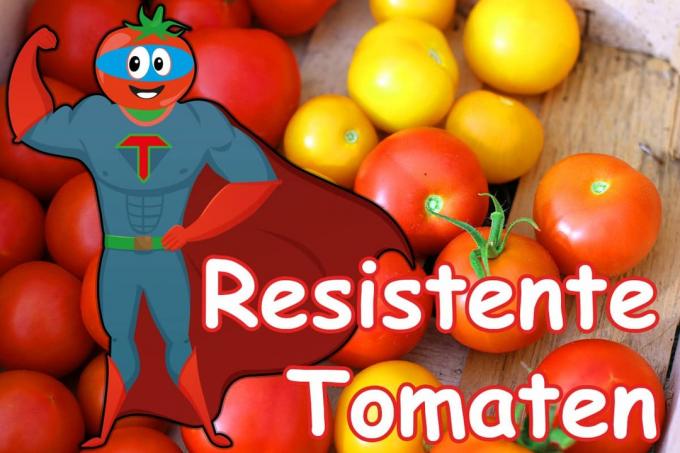
11 resistant tomato varieties defy rain and disease
Tomatoes are considered to be relatively easy to care for, but rain and numerous diseases can bother them. Fortunately, there are numerous tomato varieties that are resistant to many dreaded tomato diseases. We present the most popular specimens in this article.
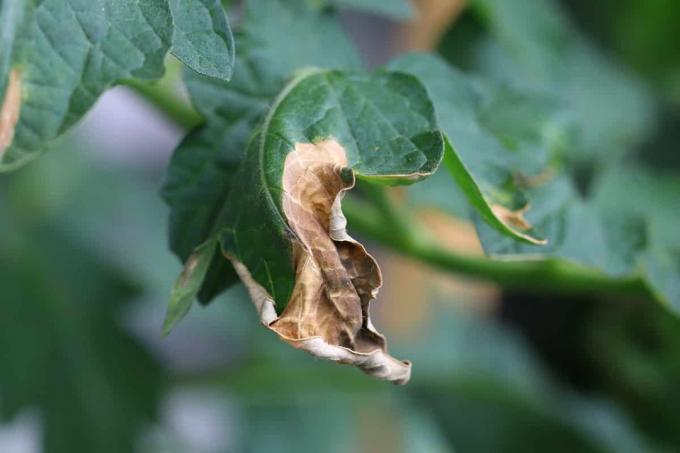
Control late blight and late blight in tomatoes
If pathogens of brown blight and late blight have settled on tomato plants, there is little hope of successful control. Home remedies and mechanical interventions only make sense in the early stages. It is all the more important that you prevent infections in a targeted manner through care measures.

How healthy are tomatoes? Information on calories, nutritional values & Co.
Snack healthy? The tomato makes it possible! Find out here why the red fruit should end up on the plate more often!

